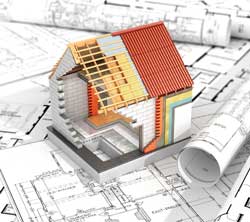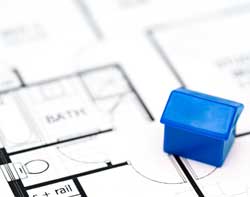Doors and building regulations – what you need to know
When it comes to legislation and safety standards relating to installing new doors in your home, there is a huge amount of information out there, which can be very confusing for the lay person to wade through.
Here at JB Kind we get a lot of calls from our customers who want to know where they stand and to ensure they are fully compliant with building regulations – a must whether you’re renovating an old property, giving your interiors a facelift with new doors, or embarking on an entire self-build.
Here’s a handy guide to what building regulations are and which areas of the rules particularly relate to doors. After all, doors are not only there to look attractive but also to perform vital safety roles such as helping prevent the spread of fires.
What are building regulations?
 Building regulations are a set of requirements laid down by Parliament to ensure that building work is carried out to an approved standard. The regulations cover a wide range of work, from major commercial and residential developments to smaller domestic projects like self builds, extensions and loft conversions.
Building regulations are a set of requirements laid down by Parliament to ensure that building work is carried out to an approved standard. The regulations cover a wide range of work, from major commercial and residential developments to smaller domestic projects like self builds, extensions and loft conversions.
The regulations are divided in to a number of ‘parts’ or sections, relating to areas that include: health and safety, conservation of fuel and energy, fire safety, ease of access and facilities for disabled people.
In any area of the country a local council will deal with planning matters – this will sometimes be the “district” council or in urban areas it will often be what is known as a unitary authority which will probably go by the name of a “city” council. To find out which council you need, check online searching for the authority which deals with building control, or ring the switchboard and ask the front desk to help you. Building control officers deal with building regulation applications and as long as the correct technical standards are met, approval should be straight forward.
Aren’t building regulations the same as planning permission?
No. Building regulations should not be confused with planning permission.
Planning permission deals with the use of land, the appearance of buildings, highway access and impact on the general environment. Planning applications are dealt with by a council’s Town Planning department and it is advised to wait until your planning permission has been granted before submitting a building regulation application.
Do building regulations relate to both internal and external doors?
Yes, they relate to both.
Which building regulations relate to the use of doors?
There are five sections within the building regulations that relate to the implementation and fitting of doors, and they are as follows:
 Part B – Fire Safety is concerned with how to ensure a safe means of escape. Fire doors obviously play a significant part when exiting a building and the regulations state where they should be situated within a building to slow down and compartmentalise the spread of fire.
Part B – Fire Safety is concerned with how to ensure a safe means of escape. Fire doors obviously play a significant part when exiting a building and the regulations state where they should be situated within a building to slow down and compartmentalise the spread of fire.
Part E – Sound Insulation is relevant to doors, particularly when fitted in an apartment block. Certain criteria are required, especially with entrance doors, to ensure they have been constructed in a way to minimise the passage of sound and fitted with the required acoustic seals.
Part L – Fuel and Power focuses on energy conservation and relates to the requirement for exterior doors to be able to achieve specified levels of insulation in the form of ‘U’ values.
Part M – Disabled Access ensures that disabled people can safely and easily access a building. Door widths needs to ensure easy wheelchair access with a clear opening; handle height and the positioning of glazing areas within a door also need to be taken into account. This part of the legislation also covers approaches to doorways. Note also that the definition of a disabled person needs to meet that set down in the Equality Act 2010.
Part N – Glazing material and protection was incorporated into Part K in 2013 and is more relevant to windows. However, it does cover the glazing in doors in relation to impact requirements and the use of safety glass.
Are there differences in building regulations for commercial and residential properties?
Yes, there certainly are. For example, with reference to Part M – disabled access – as outlined above, there are many more requirements for commercial and public buildings than private dwellings.
The field of building regulations is a complicated one and this blog is by now means an exhaustive guide. For renovation of listed buildings, for example, it may be that the advice of the local authority, as well as a local historical group may need to be sought.
Also, new legislation on building regulations will come out from time to time and your local building control officers will be able to give you an up-to-date answer to any more complicated questions than are contained in this blog.
For more information visit the Building Control Planning Portal